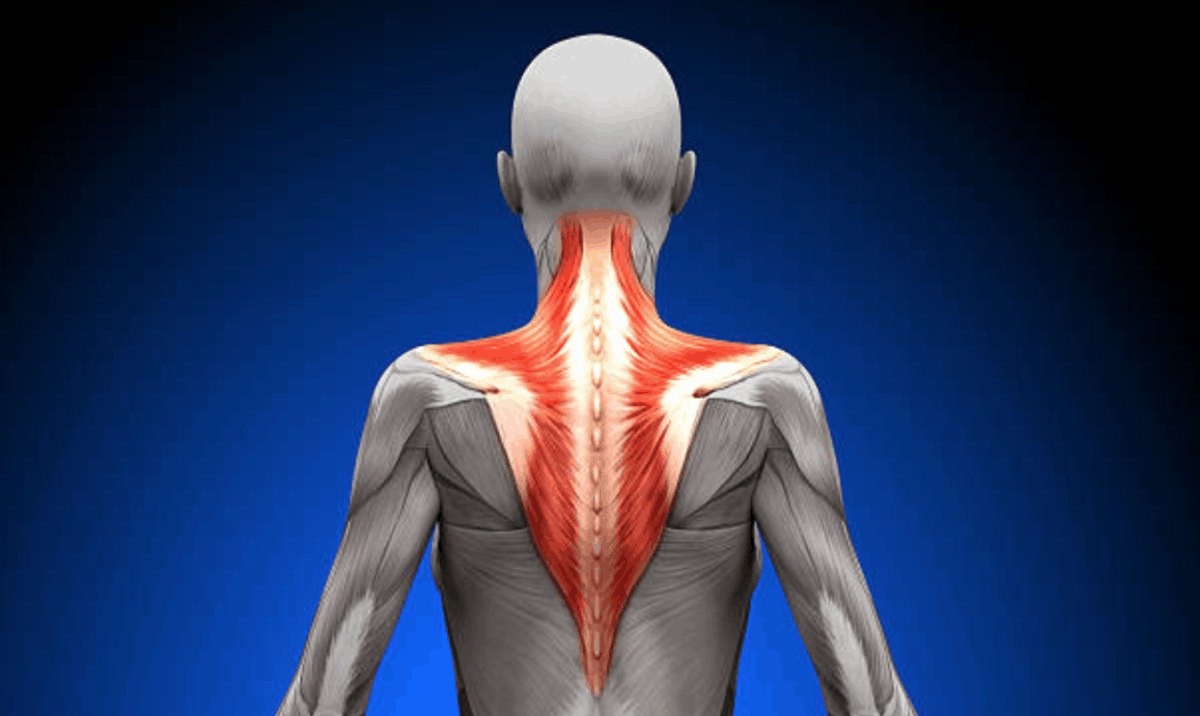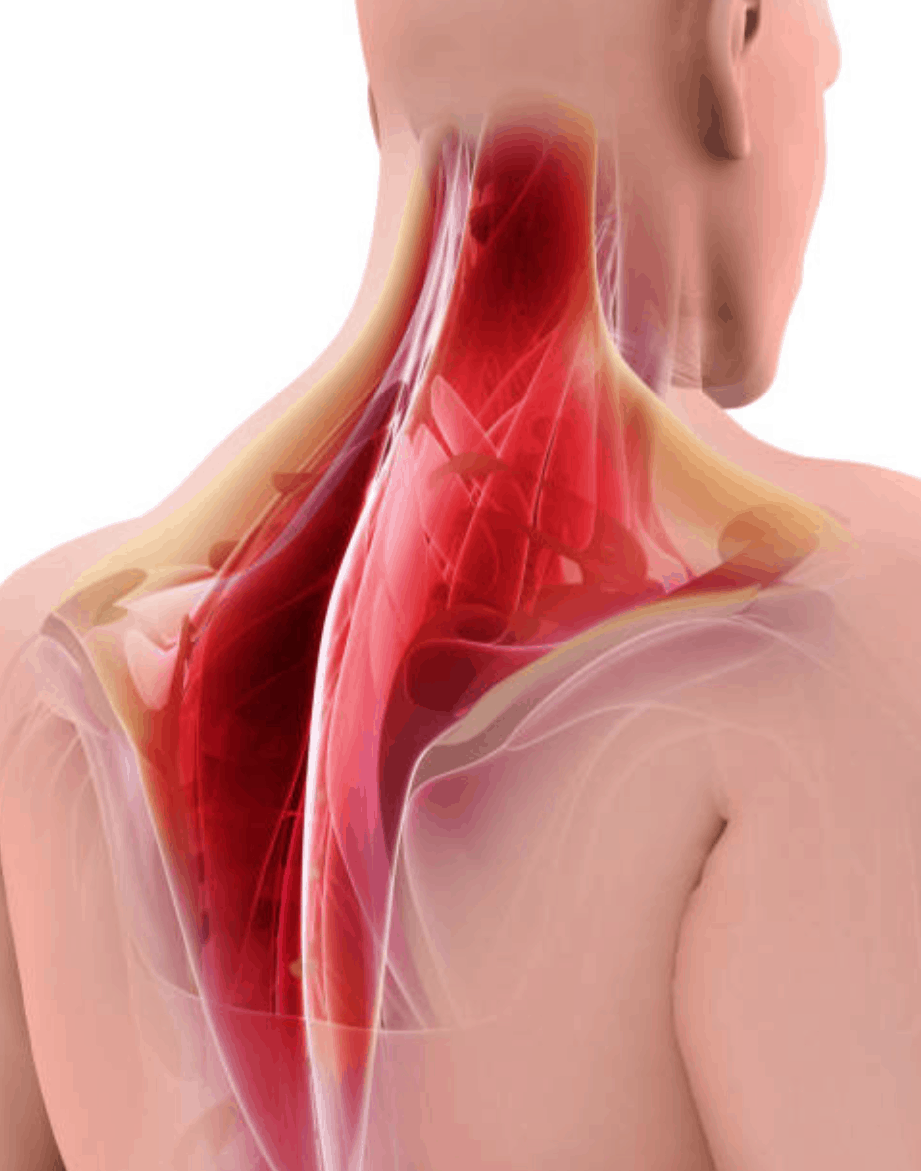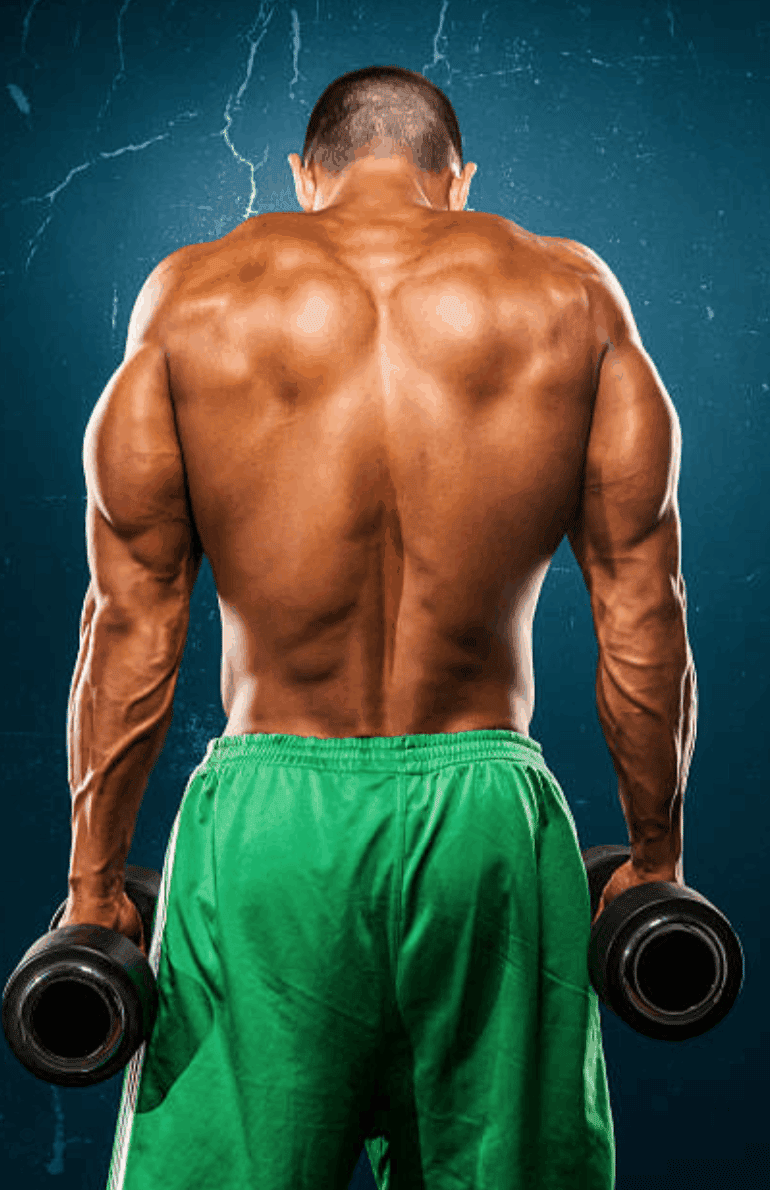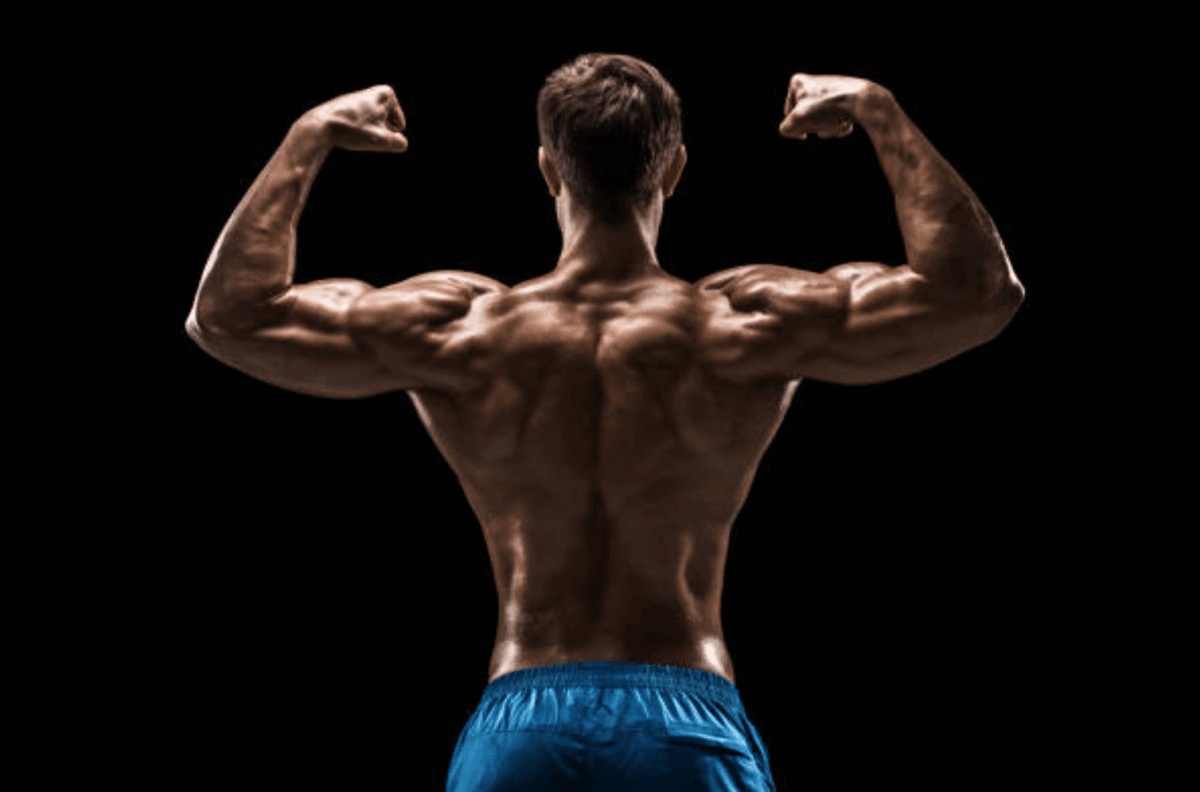Anatomy of the trapezium
The trapezius muscle is a dorsal muscle, located around the spine in the upper body. It connects the neck, the shoulders and the middle of the back. The trapezius is divided into three parts, also called fascicles. The upper trapezius is a triangle that sits in the neck. And finally, the middle trapezius is a band that runs across the shoulders.
As for the lower trapezius, it connects the shoulders to the centre of the spine, approximately where the ribs begin. From top to bottom, the trapezius connects the skull (just at the level of the sternocleidomastoid muscle), passing through the cervicals, to the tenth thoracic vertebra. The trapezius has as antagonist muscles the serratus anterior muscle and the dorsalis major muscle. It is in contact with the skin for its back part and with the spinal muscles, the greater dorsal, the supraspinatus, the lesser serratus, the rhomboids, the elevator of the scapula, the splenius and the complexus for its front part. All this being learning, we will see in this article how to build up the trapezius muscles, but to begin with :
What are these muscles for?
The lower part has two functions. First, it allows the shoulders to be lowered. Second, it allows the lower angle of the scapula to tilt outward.
The middle part also has two functions. It brings the scapula closer to the spine and it allows the shoulder to be pulled back.
Finally, the upper part has three functions. It is used to raise the shoulders. It is used to extend the head backwards. Finally, it allows you to turn your head and tilt it.
Three exercises to strengthen the trapezius muscles
Shrugs bar
This exercise of musculation makes it possible to develop the higher beam and the side beam, that is to say the top of the back. It also makes it possible to build up the arms. To carry out it, you will have to provide you with a weighted bar.
Stand upright, chest straight, arms stretched downwards with the bar at the end of the hands behind the back. Just shrug your shoulders. Think of the gesture: "I don't care", this automatism that some people have.
The goal is to get as high as possible and as low as possible in order to get the most out of the muscle. You must pause at the top of the movement for at least 2 seconds for this exercise to be effective. This is called the tempo in weight training.
However, be careful not to make any sudden movements as this could cause injury. Breathe in as you rise, breathe out as you fall. In order to make the exercise more effective, it is advisable not to load the bar too much and to make more movements. The trapezius are strong muscles, and you will probably have no trouble increasing the weight. However, these muscles respond better to duration rather than intensity.
Dumbbell shrugs
Also called dumbell shrugs. Like its levered cousin, this exercise builds upper and side bundle muscle. You'll need two dumbbells of equal weight for this.
And in the standing position, arms extended downward, with a dumbbell in each hand, you will once again practice shrugs of your shoulder blades. The dumbbells stand in front of you, if possible with the grips in the same alignment. The advantage of this technique compared to a high bar is precisely that the initial position of the hands can be changed. Thus, you can carry out the variation with the dumbbells on the side, or with the dumbbells at the back. For the latter, just remember to change your hands from a pronated to a supinated grip. Always remember to keep your back straight, and not to roll your shoulders to avoid the wound.
Rowing chin bar
Also called vertical pull-up. This is the most complete exercise, because in addition to strengthening the back, it will also strengthen the biceps, anterior deltoids, middle deltoids and posterior deltoids. It also works the muscles of the shoulder joint such as the big round. It can also be done with extensors.
Again, in a standing position, you hold the bar at arm's length. You will then bend your elbows to bring the bar up to your chin. Then lower it back down to the starting position. The more your getting started will be tight (not less than fifteen centimeters all the same), the more the exercise will be beneficial for the trapezoids. On the contrary, a more spread out grip will concentrate on the deltoids.
Be careful though, as the more you decrease the gap between your hands, the more unstable your exercise becomes. It is up to you to find the right balance between benefit and safety. To be done correctly, the chin-up rowing must be done by keeping the bar close to the body, by keeping the back straight, and especially by concentrating your effort on the elbows. The wrists should not be solicited or very little, at the risk of damaging them.
End of session stretching for the trapezius
After having done all these strength training exercises, it is essential to relax your muscles, especially the shoulder joints. Stretching is the best solution to relieve the muscle fibers and will allow a return to calm.
Here are a few techniques that are easy to apply and practice. Shoulder rotations are particularly recommended for relaxing the trapezius muscles. Three sets of ten repetitions are sufficient to restore flexibility to the muscles. You can also move your head from right to left by sticking your chin on the neck between the two. This should be done very gently so as not to traumatize the muscles and have the opposite effect to that desired.
Finally, it is possible to resume the shrugs on empty. This consists in raising the shoulders, blocking the breath for a few seconds, and then lowering the shoulders all at once. Gesture to make during thirty seconds to one minute. Relaxation guaranteed at any time of the day. Indeed, all these exercises can be done anywhere and anytime.
Conclusion
Building up your trapezius muscles by doing strength training exercises is quite easy. You don't need bulky equipment or to twist yourself in all directions to develop your muscles. You are free to choose the weights you will lift as well as the intensity of your movements. The only rules to respect are therefore classic: know yourself well, don't overdo it, and always take time to recover in order to give the muscle a return to calm worthy of the name.
Find all these exercises in detail and much more below:
Other articles to read :
How do I get back into weight training after a break?
Larry Scott curl: One of the best exercises for the biceps











